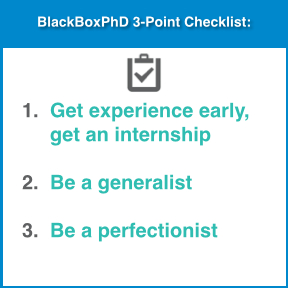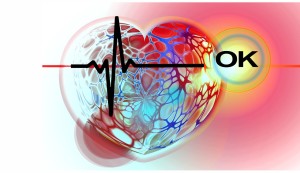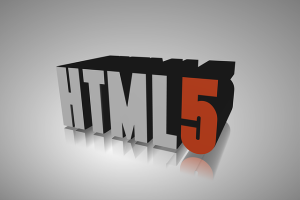Designing for Health with Erick Maynard

Erick Maynard
Hospitals and health care are rapidly changing the way they use technologies. Part of it is because of changes in technologies, part of it is because of changes in business practices and social entrepreneurship, and part of it is because of requirements from the government. But what impact do these changes have on patients? And what do technology entrepreneurs need to know about how to develop health technologies like electronic medical records platforms? Erick Maynard is the founder and CEO of the software development company Electronic Methods, and the Chief Technical Officer of the Electronic Medical Record company Health-e-MedRecord. In this week’s interview, he will teach us about how web development, design, and electronic medical records platforms, are shaping our health care.

Adam Rogers,one of the best Jazz guitarists alive today, he said something that resonated with me. He said that if you make a mistake in music, no one is going to die, so make the best of your mistake and move on. However, now that I am working on healthcare products, I’m being forced to think about those life or death situations.
Hi, Erick. How did you get involved in web development for healthcare?
It’s one of those things that just kind of happened. My company focuses on web and app development for many different types of industries, but originally we were focused on arts and entertainment. That was just the crowd of people I knew at the time because I went to school for Jazz Studies. Clients in that industry value great design, and it just so happened that my first healthcare client also valued design and liked my work.
Landing that first client in a new industry is the most difficult because you always get the question: “Have you built any products in this industry before?” If the answer is “no”, then it can be difficult. The client has to take a leap of faith that you are experienced enough in your field to provide value in theirs. But when you can answer “yes”, and you can prove that you were successful, it really opens up new possibilities because you aren’t as much of a risk to a new client. Luckily, answering “yes” is the difference between zero experience and one experience. So it’s just that first venture that is the most difficult to get. I wouldn’t ever say that it’s easy, but having that first experience helps a lot. So if you are starting out, an internship is a great opportunity to get that first experience.
Landing that first client in a new industry is the most difficult because you always get the question: “Have you built any products in this industry before?” If the answer is “no”, then it can be difficult.
How does proper or improper web design and development affect health care?
In healthcare, time is of the essence. Bad design can have a direct impact on the quality of care a medical professional can provide. I have spent the last year working on MedCordance, which is attempting to improve workflows for doctors in the ER. Talk about a time sensitive job! Current technology systems that are in place require doctors to spend multiple hours per day inputting data, and doctors are very frustrated because they know it shouldn’t have to be like this. You should see some of these systems doctors have to use. Some of them are DOS based! Design is the key to fixing this problem in three key ways: it helps make the interfaces more intuitive, it helps reduce the amount of clicks required to complete a task, and it makes it possible to use the interfaces on a range of mobile devices rather than just a desktop.
I also believe that the expectations that people have for applications has increased exponentially in the last few years. People just expect things to be well designed now. It’s not so much a value proposition as it is a necessity.
On the development side, any mistakes can be very costly. If it violates HIPAA, causes a security risk, the server takes too long to respond or isn’t available 24/7, or there is a bug that results in information not being stored correctly, that could result in longer workflows, lawsuits, or even the death of a patient. I.E. the Ebola issue a couple months back, it was due to a mistake in the EHR. The doctor discharged the patient because he never saw that the nurse had added a note. You’ll really want to double check your work and put it through the ringer before launch. And, if you’re lucky, get a pilot study so that the product can be used in a not so critical situation first.
Design is the key to fixing this problem in three key ways: it helps make the interfaces more intuitive, it helps reduce the amount of clicks required to complete a task, and it makes it possible to use the interfaces on a range of mobile devices rather than just a desktop.
Tell us about your work on Medcordance? What is it and what is its impact?
MedCordance is a cloud based Electronic Health Record (EHR) application for hospitals and care facilities that has the goal of improving doctor workflows. It was founded by Dr. Carlo Reyes, an ER physician who is the vice chief of staff at Los Robles. My company was brought onto the project to create a design that was both intuitive and beautiful, and that made the process of using an EHR more enjoyable. Additionally, hospitals are being pressured to switch over to cloud based EHR systems by 2016, so they are in the market for such a product anyways.
MedCordance has since evolved into a system that can be used for many things, not just Electronic Health Records. I’m not allowed to get into the specifics right now, but the goal is essentially to make healthcare easier and more efficient for doctors, so we are working on various interfaces and systems to do just that.
Another big part of MedCordance is what is called interoperability. As it currently stands, EHRs aren’t really capable of communicating with other systems. This makes the transfer of information from one facility to the next or from one application to another very difficult (and from hospital to patient!). Hospitals are looking for a solution to this problem, and we are working with some 3rd party companies to provide this functionality.
 What would you consider your greatest success in the professional arena? How has your work been able to positively impact the healthcare field?
What would you consider your greatest success in the professional arena? How has your work been able to positively impact the healthcare field?
I feel like my biggest success has been being able to create a company that people can feel like they belong at, are passionate about, and can make a living off of. I’m proud of the fact that I have created jobs, and get to work with a fantastic team of highly intelligent, motivated people every day, and get to work on products that have a direct impact on people’s lives. And with the health care apps, it is a literal impact. Hopefully the products I have created will actually help save lives. It’s also a lot of pressure, because if I make a mistake it could mean the opposite: death. So as you can imagine I take my work very seriously.
What is the biggest mistake or challenge that you have learned from in your work in this area? How have you learned to address and prevent it?
I think the one thing I used to be really bad at was meeting deadlines, and It’s certainly not for a lack of trying. Whenever it comes to something creative, I always want to keep making it better. I’m pretty intense when it comes to the details. My team is constantly surprised by how I can notice even the smallest issues. I can look at a design and see if it is 1px off within seconds. Just this morning actually I told my front end developer that the design asked for 50px padding and he did 48px. I’ll even completely redesign something half way through programming if I feel it’s necessary. I felt kind of crazy doing those things, because who really cares? No one else is going to know, and it can definitely work towards your detriment to be so obsessive. It gets under my skin though, I can’t stop thinking about how it’s not quite right. And at the same time, it comes in handy when you are working on healthcare apps, because you aren’t really afforded the chance to make a mistake. So if you maintain a level of detail on everything, even the amount of pixels of padding, you will keep a heightened sense of awareness, which at least for me makes me feel like I’m not going to make any major mistakes. Is it crazy? Yeah. Does it make me a better developer? I think so. Does it hurt deadlines? Not as much as it used to. I’ve just accepted my “handicap” and have learned to factor that into my timelines :p under promise and over deliver when it comes to how long you think something is going to take. It always takes longer than it should.
What are the two most important pieces of advice you have for someone who wants to be a web developer working in healthcare?
I would suggest getting an internship somewhere so you can get a feel for what it’s like, and get that first experience so that when you do go applying for jobs you aren’t starting from zero. Very few people in healthcare are willing to allow you to learn on the job, which is the opposite case in many other tech related fields. Most tech jobs will just assume that you will be learning as you go. With healthcare, it’s a slightly different culture.
Depending on exactly what you are going to do in the field, whether it’s design, frontend, or backend development, beyond what’s required of you in that capacity, become familiar with the things that are talked about daily. Essentially the buzz words: Meaningful Use, HL7 Databases, Interoperability, HIPAA laws, and anything that might be specific to what you might build. For example, you might work on a POLST interface. Really research and understand everything that has to do with POLST. Backwards and forwards. Because as a developer, not only are you responsible for building the product, you are sometimes responsible for making sure that you are including doing everything that is needed. Often times, someone on the team will forget about something, and that could be the difference between landing a deal or not. So just double and triple check that you are doing everything correctly. There is very little margin for error here.
Any final thoughts on the importance of your work as it relates to the field of healthcare?
I’ve been fortunate to be able to work on projects that are going to have a direct impact on the everyday lives of healthcare professionals, and on the quality of healthcare that is going to be provided. When I was studying music in college, we had a guest lecturer come in, Adam Rogers,one of the best Jazz guitarists alive today. He said something that resonated with me. He said that if you make a mistake in music, no one is going to die, so make the best of your mistake and move on. However, now that I am working on healthcare products, I’m being forced to think about those life or death situations.
That is both an honor and an anxiety inducer. On one hand, I feel honored that people are putting their trust in my abilities to create products that are going to be used to save lives. On the other hand, I’m constantly thinking “Yikes, what if I make a serious mistake? What’s the worst that could happen? How would I live with that kind of mistake the rest of my life?” That’s stressful. So ultimately I think it’s important to take my work very, very seriously and always remember it’s importance. But also to not get so worked up about it that it becomes detrimental. Somewhere there is a balance.

Pingback: Kata Kata Ucapan Lebaran Idul Fitri 2017/2018
Pingback: schnell geld verdienen
Pingback: Software Klinik Kecantikan
Pingback: kari satilir
Pingback: Olah Raga dan Olah Rasa
Pingback: Bolide
Pingback: bandar bola
Pingback: roof repair
Pingback: DMPK Services
Pingback: must watch
Pingback: Engineer X
Pingback: Best Engineer lawAws Alkhazraji
Pingback: horoscope
Pingback: empresas manutenção informática
Pingback: appliance repair Richmond Hill
Pingback: www.panselnas.id 2018
Pingback: cmovieshd
Pingback: 루비게임 엘리트게임 루비게임주소
Pingback: online brand management services
Pingback: free forex signals
Pingback: scribd audiobooks
Pingback: Ambika Ahuja Jaipur Escorts
Pingback: XXX JAIPUR ESCORTS ALIYA SINHA
Pingback: XXX JAIPUR ESCORTS MODEL DRISHYA
Pingback: Heena Khan Bangalore Escorts
Pingback: Jiya Malik High Profile Jaipur Escorts Model
Pingback: XXX FUN WITH JAIPUR ESCORTS PUJA KAUR
Pingback: XXX BANGALORE ESCORTS ROZLYN MODEL
Pingback: Selly Arora Independent Bangalore Escorts
Pingback: Enjoy With Jaipur Escorts Tanisha Walia
Pingback: Bristy Roy Independent Bangalore Escorts
Pingback: Bangalore Escorts Sneha Despandey
Pingback: hoverboard
Pingback: Predrag Timotic
Pingback: Bojan Simetić
Pingback: mql company
Pingback: Ruby Sen Kolkata Independent Escorts
Pingback: Diana Diaz Goa Independent Escorts Services
Pingback: Diksha Arya Independent Escorts Services in Kolkata
Pingback: Devika Kakkar Goa Escorts Services
Pingback: Rebecca Desuza Goa Independent Escorts Services
Pingback: Yamini Mittal Independent Escorts Services in Goa
Pingback: Simmi Mittal Kolkata Escorts Services
Pingback: Kolkata Escorts Services Ragini Mehta
Pingback: Navya Sharma Independent Kolkata Escorts Services
Pingback: Elisha Roy Goa Independent Escorts Services
Pingback: Alisha Oberoi Kolkata Escorts Services
Pingback: Divya Arora Goa Independent Escorts Services
Pingback: Simran Batra Independent Escorts in Kolkata
Pingback: Ashna Ahuja Escorts Services in Kolkata
Pingback: Sofia Desai Escorts Services in Goa
Pingback: Goa Escorts Services Drishti Goyal
Pingback: Mayra Khan Escorts Services in Kolkata
Pingback: intimacy kit
Pingback: Sruthi Pathak Escorts in Bangalore
Pingback: Ambika Ahuja Jaipur Escorts Services
Pingback: freshamateurs824
Pingback: comment902
Pingback: comment631
Pingback: comment28
Pingback: comment194
Pingback: comment497
Pingback: comment723
Pingback: comment647
Pingback: comment962
Pingback: comment835
Pingback: comment525
Pingback: comment951
Pingback: comment832
Pingback: comment142
Pingback: comment886
Pingback: comment329
Pingback: comment64
Pingback: comment136
Pingback: comment206
Pingback: comment391
Pingback: comment485
Pingback: comment343
Pingback: comment447
Pingback: comment532
Pingback: comment501
Pingback: comment512
Pingback: comment726
Pingback: comment799
Pingback: comment580
Pingback: comment965
Pingback: comment988
Pingback: comment763
Pingback: comment905
Pingback: comment661
Pingback: comment837
Pingback: comment959
Pingback: comment915
Pingback: comment395
Pingback: comment921
Pingback: comment520
Pingback: comment442
Pingback: comment876
Pingback: comment300
Pingback: comment190
Pingback: comment317
Pingback: comment286
Pingback: comment850
Pingback: comment600
Pingback: comment493
Pingback: comment115
Pingback: Sruthi Pathak Bangalore Female Escorts
Pingback: sirius latest movs389 abdu23na3164 abdu23na20
Pingback: new siriustube24 abdu23na7613 abdu23na8
Pingback: tubepla799 afeu23na3256 abdu23na15
Pingback: tubepla44 afeu23na3677 abdu23na65
Pingback: Sruthi Pathak Bangalore Escorts Services
Pingback: Trully Independent Bangalore Escorts Services
Pingback: Trully Independent Bangalore Escorts
Pingback: Fiza Khan Kolkata Independent Call Girls Services
Pingback: Ruchika Roy Kolkata Escorts Call Girls Services
Pingback: 2019
Pingback: cleantalkorg2.ru
Pingback: #macron #Lassalle
Pingback: a2019-2020
Pingback: facebook
Pingback: facebook1
Pingback: javsearch.mobi
Pingback: Fiza Khan Kolkata Independent Escorts Call Girls Services
Pingback: Fiza Khan Kolkata Call Girls Escorts Services
Pingback: Diksha Arya Kolkata Escorts Call Girls Services
Pingback: Diksha Arya Kolkata Independent Escorts Call Girls Services
Pingback: website
Pingback: stopnica schodowa
Pingback: Cheap
Pingback: Nidika Offer Call Girls in Bangalore
Pingback: we-b-tv.com
Pingback: hs;br
Pingback: tureckie_serialy_na_russkom_jazyke
Pingback: æóêè+2+ñåðèÿ
Pingback: Ñìîòðåòü âñå ñåðèè ïîäðÿä
Pingback: HD-720
Pingback: guardians+of+the+galaxy+2
Pingback: 2020
Pingback: kpop+star+season+6+ep+9
Pingback: 1 2 3 4 5 6 7 8 9 10
Pingback: Hyderabad Escorts Call Girls Services
Pingback: Pune Escorts Services Call Girls
Pingback: Bangalore Cheap Escorts Sevices
Pingback: Watch TV Shows
Pingback: Kinokrad 2019 Kinokrad Hd
Pingback: Kinokrad
Pingback: filmy-kinokrad
Pingback: serial 4
Pingback: youtube2019.ru
Pingback: serial 2020
Pingback: Dailymotion
Pingback: Netflix Original Movies
Pingback: online pharmacy canada
Pingback: Beograd film 2020
Pingback: psyhelp_on_line
Pingback: coronavirus
Pingback: PSYCHOSOCIAL
Pingback: rasstanovka hellinger
Pingback: Goa Escorts Call Girls Services
Pingback: Bangalore Escorts Services
Pingback: bitly.com
Pingback: moskva-psiholog
Pingback: dom2-ru
Pingback: krsmi.ru
Pingback: CFOSPUK
Pingback: MAMprEj
Pingback: fgu0ygW
Pingback: 44548
Pingback: tik tok
Pingback: dxfkfisx
Pingback: what meds not to make with zithromax
Pingback: where to get amoxicillin
Pingback: lasix medicine cost
Pingback: how to get azithromycin
Pingback: ivermectin 0.1 uk
Pingback: diflucan treatment
Pingback: dosage for synthroid
Pingback: propecia cost walmart
Pingback: neurontin cancer pain
Pingback: metformin insomnia
Pingback: plaquenil brand manufacturer
Pingback: The Revenant
Pingback: psy2022
Pingback: afisha-kinoteatrov.ru
Pingback: Ukrainskie-serialy
Pingback: top
Pingback: generic amoxil 500 mg
Pingback: furosemide lasix
Pingback: neurontin medication
Pingback: buy plaquenil 100mg
Pingback: 30mg prednisone
Pingback: priligy tablets
Pingback: buy modafinil 200mg
Pingback: ivermectin lice oral
Pingback: ventolin 2mg tablet
Pingback: azithromycin
Pingback: how to get furosemide
Pingback: neurontin 300mg
Pingback: 20mg prednisone
Pingback: buy dapoxetine in us
Pingback: provigil purchase
Pingback: zithromax buying
Pingback: olumiant medicine
Pingback: olumiant 2mg
Pingback: nolvadex order
Pingback: tizanidine 2mg
Pingback: hdorg2.ru
Pingback: xxx